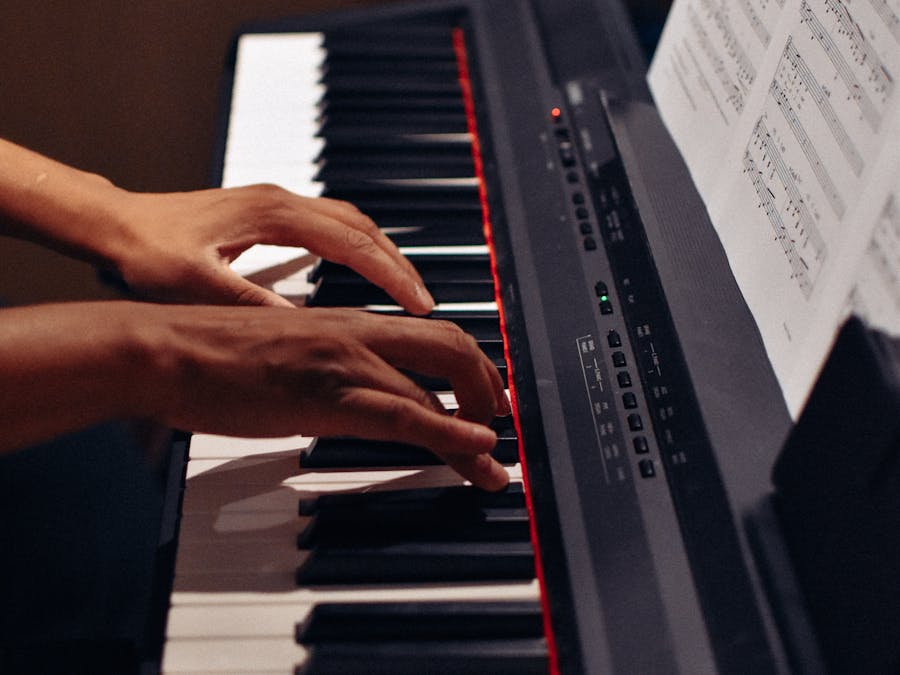 Piano Guidance
Piano Guidance
 Piano Guidance
Piano Guidance

 Photo: Thirdman
Photo: Thirdman
The short answer to that last question is: YES! It's perfectly acceptable and normal for a pianist to look at their hands while they play. An important part of the design of any musical instrument is the necessary range of movement for the player in order to produce sound.

If the piano or keyboard starts with a C note, it usually means it doesn't have the full range of keys (like an 88-key model). Instead, it'll have...
Read More »
You can only deal in ivory items that are exempt from the ban. There are standard exemptions: musical instruments made before 1975 with less than...
Read More »
Whether a piano teacher has an advanced degree in music or is just a neighbor down the street who teaches a few lessons after school, parents...
Read More »
Most instruments/singers must read notes in a certain range, because that instrument or vocalist can only handle a certain number of notes in their...
Read More »When a piano player moves their hands across the 4 feet of the keyboard length, there are generally two types of movement happening, and the way you handle them depends upon the distance between the notes. This distance between notes is referred to as an “interval” in music. The first type of movement happens when the interval between one note and another is on the smaller side. This would be when you are able to reach from the current key to the next key without having to pick up your hand. This occurs when notes are not very far apart horizontally on the keyboard: usually the distances of less than 7 keys away are within reach for an average sized pianist’s hand. In this case, the pianist memorizes the specific distance (called an “interval”) between two notes. A proficient pianist can extend their hand (or compress their hand) to those closer intervals without looking. The second type of movement requires that the line is broken: the next note cannot simple be reached by stretching or extending your hand. In this case, the pianist must lift their hand up and move it to a different location. It’s important to be able to see where to land, so the pianist will often look down at their hand in this case. Do pianists look at their hands while they play? It depends upon the musical style! A piano score can have a lot of variety. How often the notes are “out of reach” would affect how often a pianist looks at their hands while they play. Baroque keyboard music, such as a Bach Fugues or Inventions, tend not to have a lot of large skips in the melody. This means that a pianist could potentially get away with looking at their hands less often because it requires less position changes. On the other hand, music from the Romantic period – such as music written by Chopin or Liszt – often has much larger leaps in both hands. This requires the pianist to look down much more often to ensure accuracy! Remember, there are also two hands to watch at the same time! This can complicate things a lot. If you play the lowest piano key with your left hand and look at it, you will not be able to see the keys in the middle and high register, and chances are that your right hand needs to be playing there at the same time.

Are Ivory and Cream Similar Colors? Ivory and cream can both be considered shades of white or are also known as off-white colors. The cream color...
Read More »
They got good by practicing, never giving up, and building confidence at the piano by trusting their ears and their fingers. Learning piano is a...
Read More »
Grand Seiko and Rolex both offer different value propositions to their buyers. Rolex rules when it comes to brand awareness, while Grand Seiko...
Read More »
The "right" age to begin piano lessons varies from child to child. A good first test is the age when your child can tie their shoes. Many four year...
Read More »
As we discussed earlier, there is no ideal age for playing the piano. While it's possible to begin very young, from the age of 3, you can also...
Read More »
Keys can stick one day and then not stick the next day due to the temperature and humidity changes. However, if it does not return to the top, hold...
Read More »